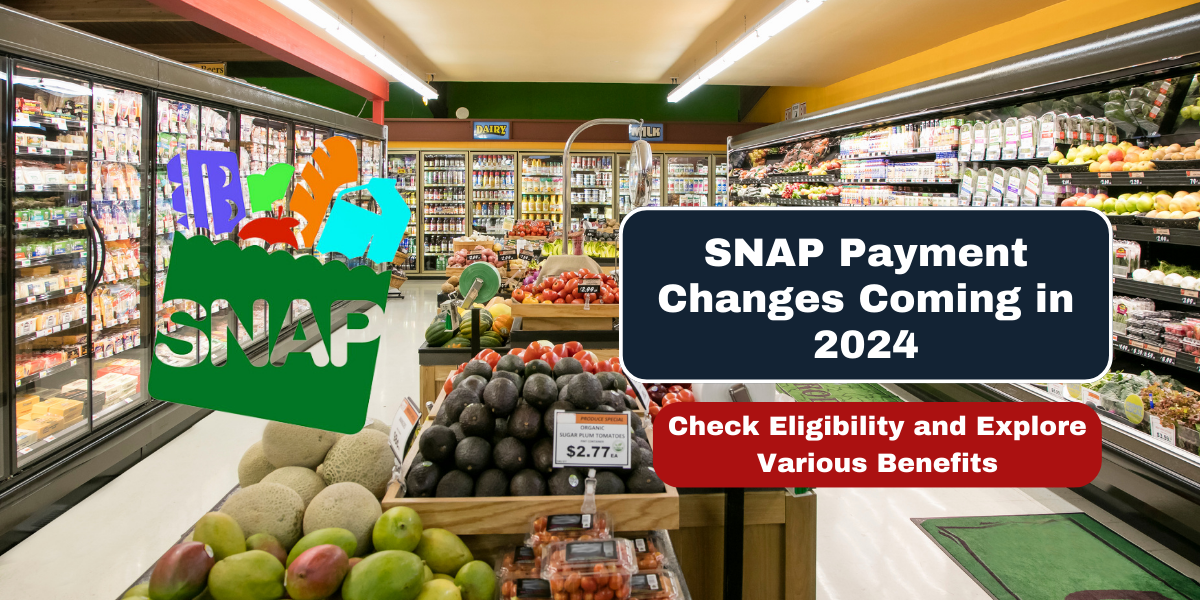The Supplemental Nutrition Assistance Program (SNAP) may experience significant changes in 2024 with the introduction of new legislation, specifically the Rural Prosperity and Food Security Act of 2024. This bill, proposed by Senate Agriculture Committee Chairwoman Debbie Stabenow, seeks to strengthen conservation and climate initiatives while also improving the SNAP program’s structure. However, a competing draft from Republican lawmakers suggests possible reductions in program funding, which could lead to notable adjustments in benefit levels and eligibility criteria.
These proposed changes could alter the operation of SNAP and the criteria for receiving aid. The goal is to enhance food security and promote sustainable practices, but the different legislative proposals create a complex situation where the final outcomes will depend on the legislative process. Beneficiaries and stakeholders in the food security sector should stay informed and prepare for the potential impacts of these upcoming changes.
| What Is SNAP? SNAP, or the Supplemental Nutrition Assistance Program, is a federal assistance program that provides financial support to low-income individuals and families to help them purchase food. Administered by the USDA, SNAP benefits are designed to improve food security and nutrition by offering monthly allotments based on household size, income, and other factors. The program aims to ensure that eligible participants can afford a healthy diet and meet their basic nutritional needs. |
Contents
Expected SNAP Benefit Changes 2024
Here are some SNAP benefit changes :
Increased Emphasis on Sustainable Agriculture
The new legislation aims to create fair food and agriculture systems by incorporating conservation and climate considerations into food security strategies. It focuses on enhancing public-private partnerships in agricultural research and providing support to local farming communities to improve access within the supply chain.
Financial Adjustments
The act suggests making crop insurance more affordable and improving access to land and credit for farmers, indirectly boosting food security by stabilizing food production.
Changes to SNAP Benefit Calculations
The military basic allowance for housing will no longer be considered as income when calculating SNAP benefits.
Restrictions for college students and individuals transitioning from foster care will be relaxed, allowing more young adults to qualify for benefits.
Income from employment and training programs will be excluded from SNAP eligibility determinations.
Inclusion and Restoration of Benefits
Individuals convicted of drug felonies will be permitted to apply for SNAP benefits 30 days before their release.
Puerto Rico will be included in the SNAP benefits program, broadening its scope.
Increased funding for SNAP education will help beneficiaries make more informed food choices.
Impact of Potential Funding Cuts
If the alternative Republican draft is approved, SNAP could face a $30 billion cut over the next decade. These reductions might halt adjustments for food inflation, potentially resulting in an average monthly loss of approximately $7 per household. With over 41 million Americans depending on SNAP, such changes could significantly impact food security across the country.
Additional SNAP Updates for 2024
The USDA updates SNAP benefits annually based on the cost of living. For the fiscal year beginning October 1, 2023, and ending September 30, 2024, the following changes have been made to eligibility and benefit levels:
Eligibility Age Increase
The age limit for “able-bodied adults without dependents” (ABAWD) will be raised, extending work requirements to individuals up to age 54 by October 2024.
Income Eligibility
The gross monthly income limit is set at 130% of the federal poverty level, with amounts adjusted according to household size and geographic location.
Maximum Allotments
Maximum benefit allotments have been updated, with specific amounts varying by state and household size.
Understanding SNAP Benefit Amounts and Eligibility Criteria
SNAP benefits and eligibility criteria are tailored to support individuals and families by offering financial assistance for grocery purchases. These parameters are updated each year to account for fluctuations in the cost of living and economic conditions.
Eligibility Criteria
To be eligible for SNAP benefits, households must meet various income and resource criteria, including:
Income Limits
- Gross Monthly Income: Must be at or below 130% of the federal poverty level (FPL), varying based on household size and state of residence.
- Net Monthly Income: Must be at or below 100% of the FPL after allowable deductions are applied.
Resource Limits
- Households without elderly or disabled members: Must have resources (such as cash or bank account balances) of $2,750 or less.
- Households with elderly or disabled members: Must have $4,250 or less in resources.
Work Requirements
- Able-bodied adults without dependents (ABAWDs): Must work or participate in a work program for at least 80 hours a month. Starting October 2024, this requirement will extend to individuals up to age 54.
Other Criteria
- Citizenship: Applicants must either be U.S. citizens or satisfy specific non-citizen eligibility requirements.
- Exclusions: Certain individuals, including strikers, most college students, and some non-citizens, are not eligible.
SNAP Benefit Amounts
The total SNAP benefit a household receives, referred to as the allotment, is mainly determined by the household’s size, income, and allowable deductions. These deductions may include earnings, dependent care expenses, medical costs for elderly or disabled members, and excessive shelter costs.
Monthly Allotment Calculation
The benefit amount is determined by estimating the income left for food after covering basic needs. Households are expected to allocate 30% of their net income toward food expenses. The SNAP allotment is calculated as the difference between this 30% contribution and the maximum benefit amount for the household size.
Maximum and Minimum Allotments
For fiscal year 2024, the maximum SNAP allotments vary according to household size and location to account for differences in the cost of living. For example, a family of four in the 48 contiguous states and D.C. can receive up to $973 per month. The minimum benefit for smaller households is set at $23.
Cost of Living Adjustments (COLA)
Allotments are adjusted annually to account for fluctuations in the cost of living, thereby guaranteeing that SNAP benefits remain consistent with the rate of food inflation.
Example Amount Calculation
For a family of four with a net monthly income of $1,200:
- The household’s expected contribution toward food is 30% of $1,200, which equals $360.
- Given that the maximum allotment for a family of four is $973, the SNAP benefit would be calculated as $973 minus $360, resulting in $613 per month.
SNAP’s structure is designed to tackle food insecurity by adjusting benefits according to economic factors and household needs. By understanding these details, eligible individuals and families can better access the support they require. The program’s criteria and benefit calculations aim to direct aid to the most vulnerable populations while adapting to changes in economic conditions and the cost of living.
Conclusion
As SNAP faces potential changes in 2024, understanding the adjustments to benefits and eligibility is crucial. The Rural Prosperity and Food Security Act of 2024 aims to enhance food security and sustainability, but potential funding cuts from alternative proposals could impact benefit levels. With updates to eligibility, income limits, and allotments, staying informed about these developments helps ensure that eligible individuals and families can navigate the evolving landscape of food assistance. Keep abreast of legislative changes to fully understand how they may affect your SNAP benefits and support.
FAQs
What are the main changes to SNAP benefits in 2024?
Changes include potential updates from new legislation and possible funding cuts. This may affect benefit levels, eligibility criteria, and work requirements.
How might proposed legislation impact SNAP benefit amounts?
The legislation could either increase benefits by adding new eligibility criteria or decrease them if funding cuts are implemented.
How are SNAP benefits calculated?
A household’s size, income, and deductions are taken into consideration while determining eligibility for benefits. Households must spend 30% of their net income on food, with SNAP covering the difference between this amount and the maximum benefit.






